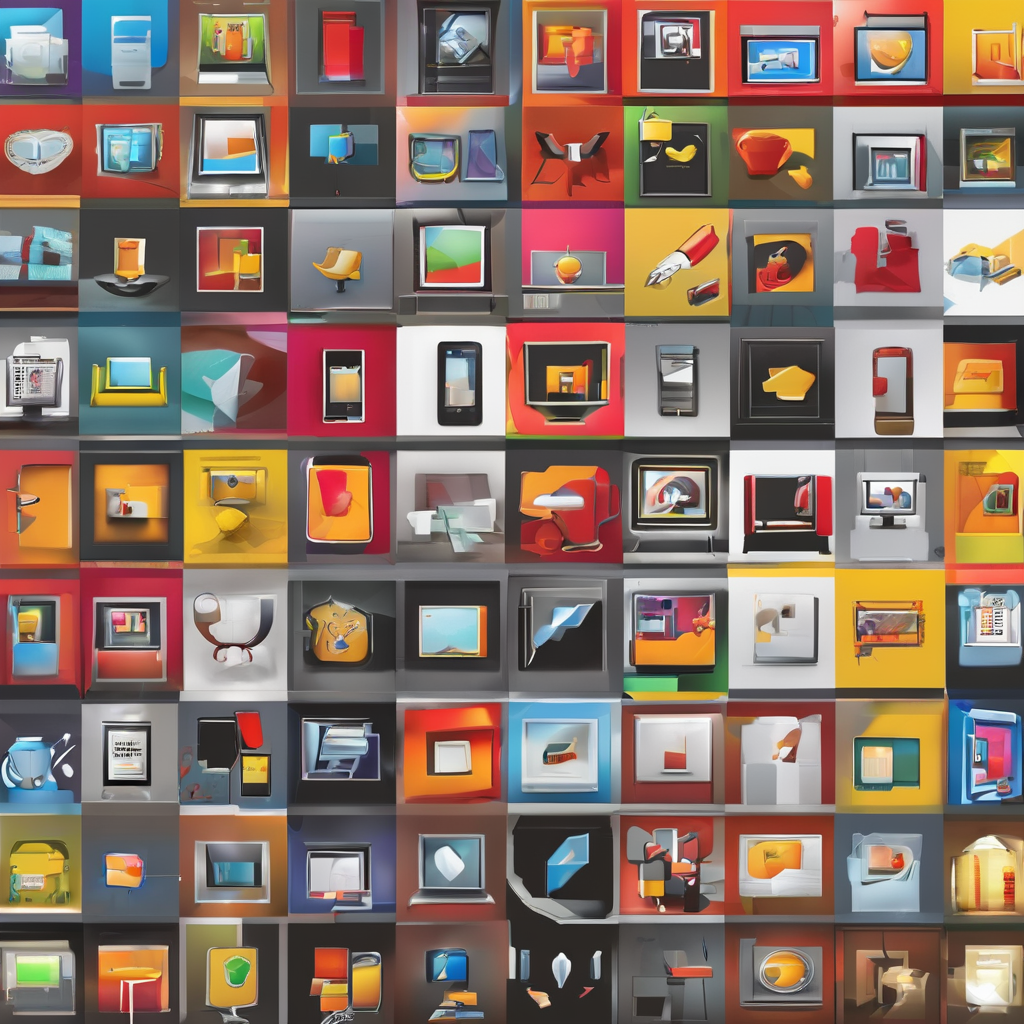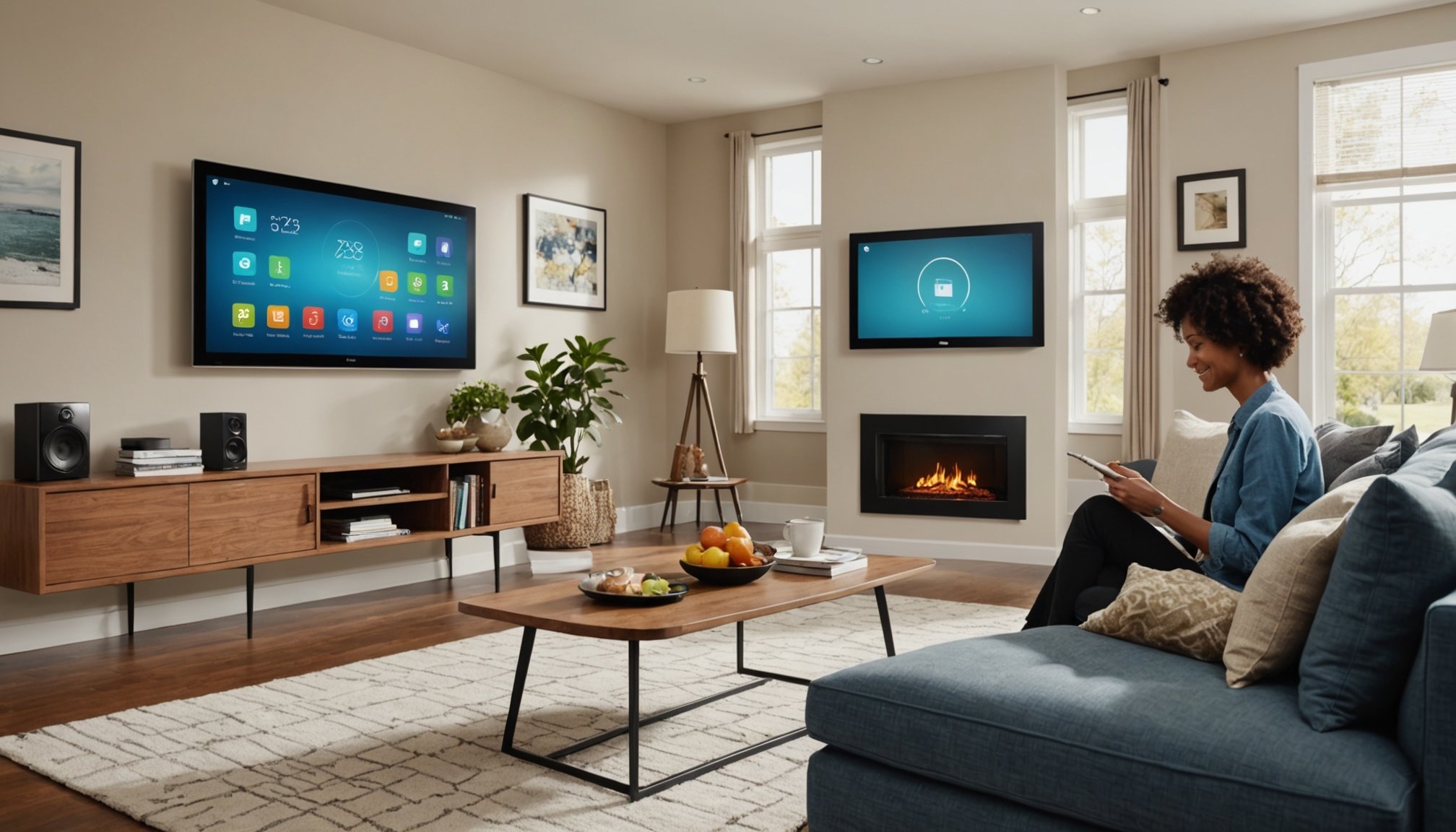Overview of Smart Home Innovations for Seniors
Smart home technology is revolutionizing the way we live, especially for seniors who prioritize comfort and safety. With these innovations, older adults can maintain an independent lifestyle while ensuring their home environment is both secure and convenient.
A growing trend in smart home technologies is the focus on enhancing senior comfort. This includes automated lighting systems that adjust according to time of day or motion, making it easier for seniors to navigate their homes without the need for manual switches. Furthermore, smart thermostats aid in controlling the home’s climate, ensuring optimal comfort throughout the seasons.
Also read : Ingenious Laundry Solutions Perfectly Designed for Snug Studio Apartments
To address senior safety, a variety of smart home systems and devices are available. These range from voice-activated assistants like Amazon Alexa and Google Assistant that offer hands-free operation, to smart doorbells and security systems providing video feeds. Such measures not only deter intrusions but also offer peace of mind to the elderly and their families.
Incorporating smart home technology into seniors’ living spaces promises numerous benefits—from convenience to increased autonomy. With the right combination of devices, seniors can enjoy tech-savvy living tailored to their unique needs. By integrating these technologies, senior citizens can experience a harmonious blend of modern innovation and traditional comfort.
In parallel : Designing a Chic Tiered Indoor Plant Stand to Enhance Minimalist Home Aesthetics
Key Smart Home Devices for Enhancing Senior Living
Smart home devices are transforming life for seniors, offering a blend of innovation and practicality tailored to their needs. Focusing on senior safety is an essential aspect, with technology playing a significant role.
Smart Lighting Solutions
Smart lighting offers immense benefits by enhancing safety and accessibility. Automated lighting, triggered by motion or voice commands, ensures ease of navigation for seniors, reducing the risk of falls. Such systems can mimic natural daylight, positively influencing mood and wellbeing. User-friendly features like voice activation allow seamless modification of settings without manual effort, encouraging independence.
Voice Assistants and Smart Speakers
Devices like Amazon Alexa and Google Assistant offer myriad facilities specifically aiding seniors. They simplify task scheduling, reminders, and even control other smart home devices. The integration of voice assistants with existing smart systems reduces daily complexities, making homes even more tech-savvy and supportive of senior needs.
Smart Doorbells and Security Systems
Security is crucial for independent living. Smart doorbells and security systems equipped with video feeds and alert functionalities provide peace of mind. These systems deter potential intrusions and allow seniors to monitor their surroundings easily. Selecting devices with senior-friendly interfaces ensures simple operation, empowering seniors to maintain control over their home environment efficiently.
Health Monitoring Devices
With the rise of health tech, seniors can now take advantage of advanced devices like smart wearables that offer continuous real-time health insights. These devices are instrumental in tracking critical health metrics such as heart rate, activity levels, and even sleep patterns, thereby promoting a holistic approach to senior wellness.
Fall detection technology is another marvel, specifically designed to alert caregivers or family members in case of an accidental fall. Devices equipped with this feature often incorporate sensors that distinguish between normal movements and dangerous falls, ensuring prompt assistance during emergencies.
Remote health monitoring presents numerous benefits for seniors, particularly in maintaining regular health check-ups without constant visits to healthcare facilities. This convenience fosters independence while still providing a safety net of medical attention when necessary.
The integration of these monitoring devices with healthcare providers and family members bridges the gap between remote care and personal interaction. Alerts and data can be shared directly with physicians or family via smartphone apps, allowing for informed decision-making and timely responses to health changes. Such connectivity transforms how seniors manage their health, adding another layer of comfort and assurance in their daily lives.
Smart Home Automation for Daily Living
In the realm of smart home technology, home automation stands as a cornerstone for enhancing convenience and improving lifestyle for seniors. This innovation not only simplifies daily routines but also introduces a level of comfort previously unimaginable.
Automated Home Control Systems
Centralized control is crucial for senior users, offering simplicity and cohesion in managing multiple devices. Systems like Samsung SmartThings and Google Nest facilitate easy adjustments, from lighting to security, all under one interface. Real-life applications include automating morning routines or setting up reminders for daily activities, ensuring a seamless and supportive living environment.
Smart Thermostats and Climate Control
Smart thermostats, like Nest Thermostat or Ecobee, greatly contribute to elder comfort. They enable precise climate control, adapting to the individual’s preferences, and yield significant energy savings by optimizing usage patterns. Environmental considerations align with tech-savvy living, making these devices a cost-effective investment. Proper integration ensures these systems are user-friendly, promoting their accessibility for all tech skill levels.
User-Centric Automation Features
Senior-centric features focus on effortless usability. Simple interfaces and voice-controlled options cater to varied individual needs, encouraging independence. Customization, such as preset routines for mobility assistance, reflects feedback from users and caregivers, emphasizing the collaboration between technology and senior well-being.
Considerations for Choosing Smart Home Solutions
Selecting the ideal smart home devices for seniors requires careful analysis of their specific needs. Ensuring the technology is user-friendly is paramount. Designs focusing on simplicity and accessibility are vital. This includes intuitive interfaces and hands-free operation features, especially for those with limited mobility.
Prioritizing support resources can significantly improve user confidence and satisfaction. Devices backed by comprehensive customer support and manuals can ease the transition into tech-savvy living. This support reassures seniors and their families, promoting a seamless integration into daily routines.
When evaluating costs, consider both the initial and ongoing expenses. While it might be tempting to opt for cheaper options, balancing cost with value and longevity is essential. Investing in durable, high-quality devices can offer better long-term savings, reducing the need for frequent replacements.
Another vital consideration is the compatibility of the chosen devices with existing systems. Compatibility ensures a cohesive smart home experience, enhancing overall efficiency and ease of use. Adopting devices that work harmoniously together can streamline home management, making technology a powerful ally in enhancing senior safety and comfort.
Practical Tips for Implementing Smart Home Technologies
Implementing smart home technologies can be smooth with the right installation tips and strategies to enhance usability. Starting with basic installation, it’s pivotal to follow manufacturer guidelines meticulously, ensuring a seamless setup. Select devices compatible with existing systems to maintain connectivity across all gadgets. For those seeking a professional touch, hiring skilled technicians can assure optimal smart home implementation. This approach is especially beneficial for complex systems requiring specialized integration.
Step-by-Step Installation Guide
Beginners can benefit from following a structured installation process. Smart home implementation typically involves connecting devices to a network, configuring settings via apps, and testing functionalities. If challenges arise, manufacturer helplines and community forums offer invaluable insights for troubleshooting.
Training and Educating Users
Educating seniors on new technology is crucial for encouraging independence and confidence. Providing user manuals and easy-to-understand video tutorials can aid learning. Family and caregivers play a vital role by offering hands-on support and highlighting resources like local workshops. Continuous learning fosters a positive approach to technology.
Ensuring Connectivity and Integration
A reliable Wi-Fi connection is the foundation of a smart home. Position routers centrally and use extenders to eliminate dead zones for robust network coverage. Aligning device settings ensures seamless communication among devices, creating a truly connected home environment. Addressing connectivity issues early can prevent future setbacks.
User Reviews and Expert Opinions
When considering smart home technology for seniors, it’s essential to look at both user experiences and expert analysis. Users often highlight the transformative impact of these devices, particularly in enhancing comfort and safety. Reviews frequently mention the ease of use of smart home systems that cater to seniors, emphasizing seamless navigation and simple interfaces.
Experts agree that integrating smart home devices into daily life can significantly improve seniors’ independence. Their analysis often focuses on performance and reliability, praising systems like voice-activated assistants for their intuitive controls and real-time responsiveness. These devices, such as Amazon Alexa and Google Assistant, not only streamline daily tasks but also foster a tech-savvy living environment.
Product ratings reveal trends where features like voice activation and remote monitoring are highly valued. Experts recommend devices that demonstrate consistency in performance and offer robust customer support. Such endorsements help guide potential buyers towards informed decisions, ensuring the technology aligns with senior comfort and safety needs.
Ultimately, user feedback and expert insights together paint a comprehensive picture of the benefits and considerations associated with smart home technology for seniors, offering a well-rounded perspective for anyone exploring tech solutions tailored to elder care.


